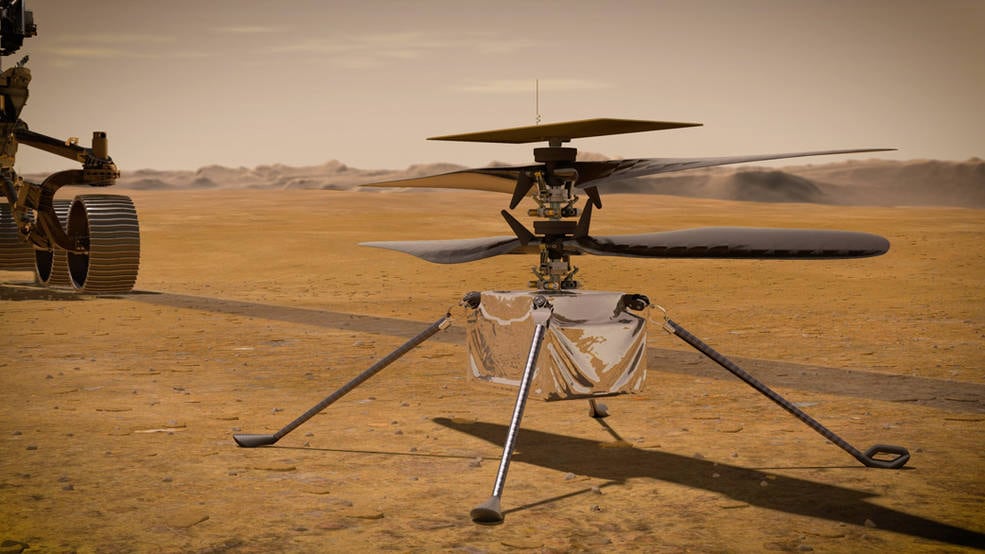NASA’s interplanetary rock collection is ready to explode. For more than a year now, the agency’s Perseverance rover has been hard at work collecting samples from the surface of Mars with the goal of eventually getting them back to Earth in the early 2030s so scientists can ogle them up close. But one of the biggest questions for NASA was how exactly they were going to accomplish this.
Now we know.
The agency announced on Wednesday that they’re not only going to scrap their original plan of sending another rover to help shuttle the samples, but they’re also going to send two new helicopter drones to potentially make the pick-up. NASA believes this simplifies the process since it’ll require fewer launches to accomplish. The agency also noted that they were inspired by how well the Ingenuity Mars helicopter has performed since landing on the Red Planet.
ADVERTISEMENT
“There are some significant and advantageous changes to the plan, which can be directly attributed to Perseverance’s recent successes at Jezero and the amazing performance of our Mars helicopter,” Thomas Zurbuchen, associate administrator for science at NASA, said in a press release.

This illustration shows a concept for multiple robots that would team up to ferry to Earth samples collected from the Mars surface by NASA's Mars Perseverance rover.
NASA/JPL-CaltechThe main hurdle to retrieving the rock collection seems simple at first: The Perseverance rover needs to transfer all of the samples it collected into the rocket that will eventually transport them back to Earth. However, this poses a number of big challenges due to the fact that NASA can’t precisely determine where the rocket will land. So if it's somewhere the rover can’t reach, we might be out of luck. Also if it lands too close to the rover (the rockets on those landers can get pretty hot, after all), it could damage it.
Perseverance also needs a way to put the samples onto the rocket. In the original plan, a second rover from the ESA dubbed the Sample Fetch Rover would also be sent along with a lander in its own launch. If Perseverance wasn’t able to transfer the samples for any reason, the Fetch Rover would get them instead.
However, the new plan is to send two new helicopter drones aboard the same payload carrying the rocket. That means we only need one lander for the whole mission. The recovery helicopters will collect the samples if Perseverance can't.
NASA’s move to use chopper drones just shows how successful the Ingenuity experiments have been. At the time of publishing, the Mars helicopter has made nearly 30 flights and has covered more than four miles of the Red Planet. With two new drones expected to make their maiden voyage on Mars, you can expect that the future of Martian exploration will include plenty of helicopters.






